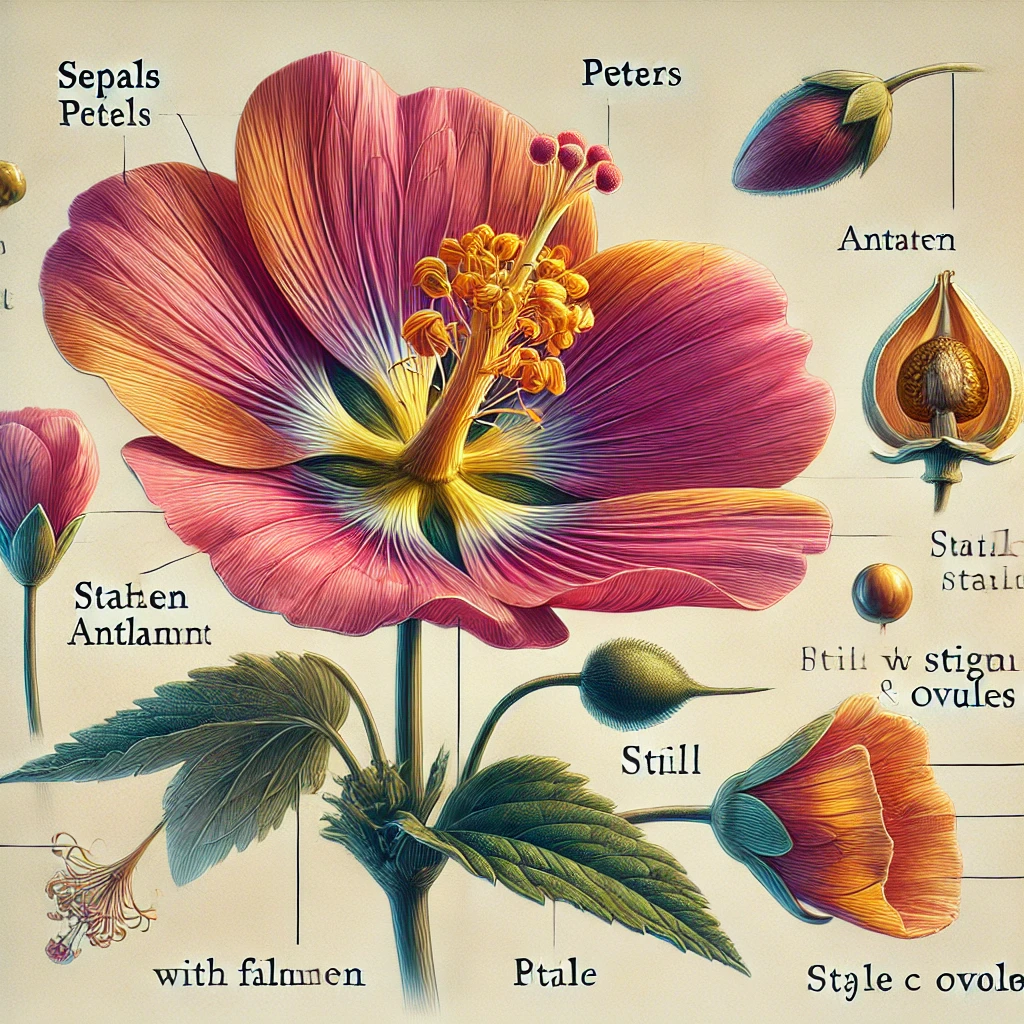
Exploring the Beauty and Structure of a Flower: Parts and Functions
Flowers are one of nature’s most beautiful creations. They not only attract us with their vibrant colors and fragrances but also play a crucial role in plant reproduction. Understanding the structure of a flower reveals the fascinating processes behind pollination, fertilization, and seed development. In this post, we’ll take a closer look at the parts of a flower and their specific functions.
—
1. Sepals (Calyx)
The sepals form the outermost layer of a flower and protect the bud before it opens. Usually green and leaf-like, sepals act as a shield, preventing harm from insects, weather, or other environmental factors. Collectively, all the sepals are called the calyx.
2. Petals (Corolla)
Petals are the colorful, eye-catching parts of the flower that we often admire. Their primary function is to attract pollinators such as bees, birds, and butterflies. The vibrant colors, patterns, and sometimes even scents guide pollinators to the flower’s reproductive structures. Together, all petals are known as the corolla.
3. Stamen (Male Reproductive Part)
The stamen is the male reproductive part of the flower, consisting of two main components:
Anther: This is the top part of the stamen and produces pollen, which contains the male reproductive cells (sperm).
Filament: A slender stalk that supports the anther, positioning it so pollinators or the wind can effectively transfer pollen to other flowers.
Collectively, the stamens in a flower are called the androecium.
4. Pistil (Female Reproductive Part)
The pistil, also known as the carpel, is the female reproductive part of the flower. It is usually located in the center and has three main components:
Stigma: The sticky, topmost part of the pistil where pollen lands during pollination. The stickiness helps trap pollen grains, which is essential for successful fertilization.
Style: The style is a tube-like structure that connects the stigma to the ovary. It provides a pathway for the pollen to travel down into the ovary.
Ovary: Located at the base of the pistil, the ovary contains ovules, which are the female reproductive cells (eggs). After pollination, the ovary develops into a fruit, and each ovule becomes a seed.
Together, the stigma, style, and ovary make up the pistil, also known as the gynoecium.
5. Receptacle
The receptacle is the base of the flower, where all parts of the flower are attached. It is the thickened portion of the stem that holds and supports the flower’s structure.
6. Peduncle
The peduncle, or flower stalk, connects the flower to the main stem of the plant. It provides the necessary support for the flower and aids in nutrient and water transport.
7. Nectaries
Located at the base of the petals or near the base of the flower, nectaries produce nectar—a sweet liquid that attracts pollinators. Pollinators feed on the nectar and, in the process, carry pollen to other flowers, aiding in the plant’s reproductive process.
8. Ovules
The ovules are found inside the ovary and contain the female reproductive cells. Each ovule has the potential to become a seed if fertilized by pollen. After fertilization, the ovary matures into a fruit that contains these seeds.
—
The Journey of Pollination and Fertilization
Understanding flower anatomy helps us appreciate how pollination and fertilization work. When a pollinator or the wind transfers pollen from an anther to a stigma, the pollen grain travels down the style to reach the ovary. Fertilization occurs as the male and female cells combine in the ovule, leading to the formation of seeds and, ultimately, new plants.
—
Conclusion: Flowers are beautifully intricate, with each part serving a unique purpose. Their delicate, well-organized structures facilitate pollination and seed formation, ensuring the plant’s survival and continuity. Next time you admire a flower, take a moment to appreciate the complexity of its parts and the essential role they play in the cycle of life.